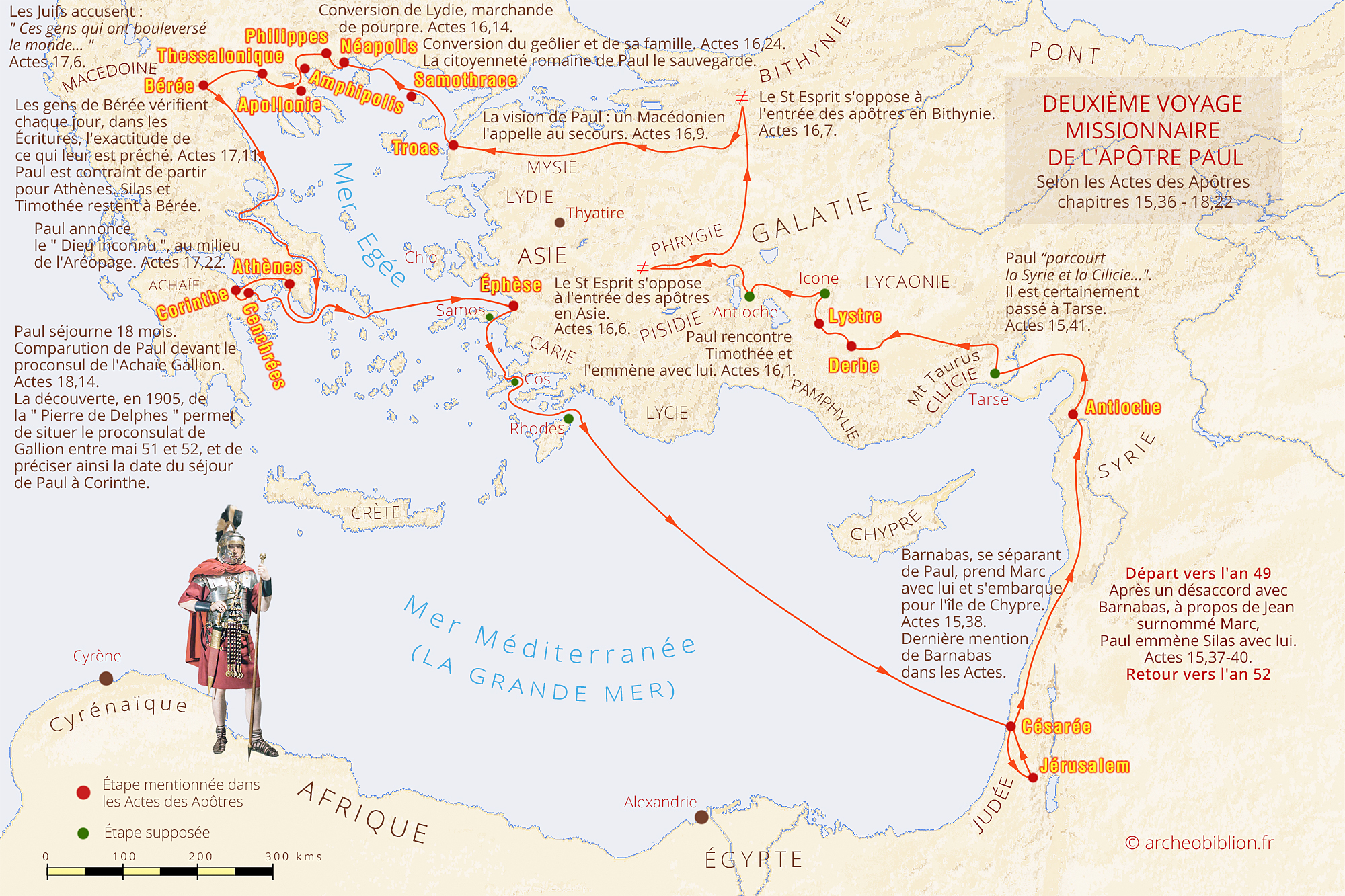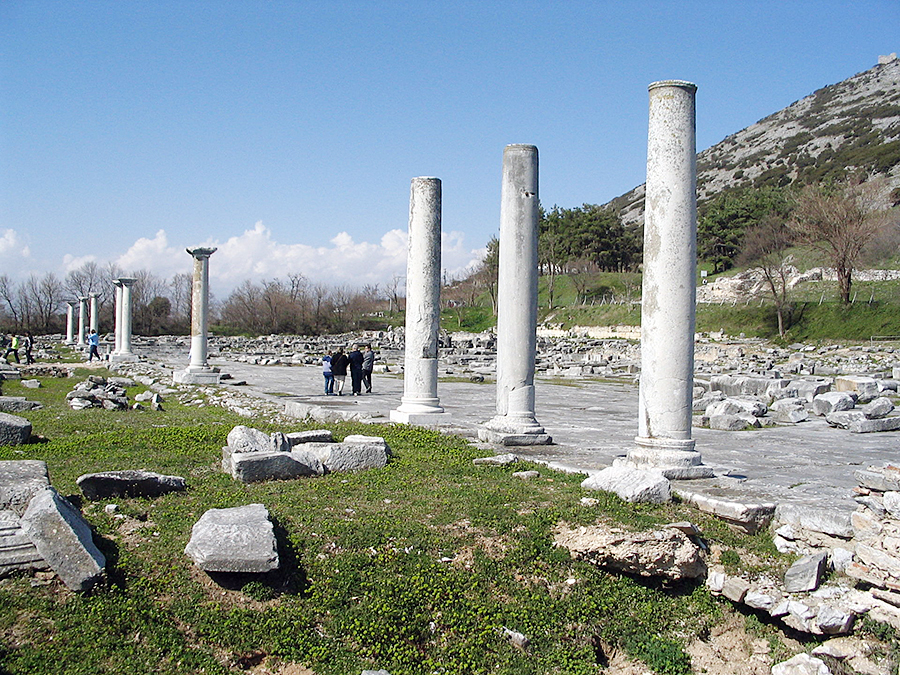
Bible, History, Archaeology
Bible,
History,
Archaeology
The apostle Paul's second journey
To view the map, click on the image
Introduction
Dates vary from source to source and are approximate.
Following a disagreement with Barnabas over his nephew Mark, Paul separated from them and set off again with Silas to visit the churches founded on the first trip. But the planned program is disrupted by the Holy Spirit and a vision (Acts 16,6-10); Paul and Silas leave the East and set sail for Macedonia. In Philippi, the first Church in Europe, a community is formed around a woman, Lydia. Their stay in this city is eventful, but ends well (Acts 16,16-40). The same was true of Thessalonica, where Jews were fomenting trouble against them.
Image opposite: the ruins of ancient Philippi, looking northwest along the southern portico (stoa) of the city's main market (or agora). A roof would have covered the grassy area along the near side of the line of monumental columns. © Ian W. Scott.
In Athens, Paul tried to adapt his preaching to the academics listening to him, but he had little success, as faith in the resurrection seemed absurd to Greek philosophers (Acts 17,16-34).
In Corinth, on the other hand, the Gospel penetrated the hearts of dockers, merchants and slaves. Paul lodged and worked as a weaver with Priscilla and Aquila, a Jewish couple expelled from Rome. The Jews accuse him of disturbing public order, before the proconsul Gallion (Seneca's brother); Paul, acquitted (Acts 18,1-17), stayed in Corinth for a year and a half (51-52). Here he wrote his first letters to the Church of Thessalonica, founded the previous year. He then set sail for Ephesus and Caesarea, before returning to Antioch.
Links to the apostle Paul's other journeys:
The apostle Paul's first missionary journey →



